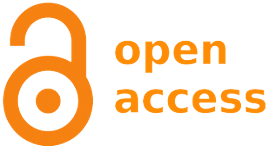Consumption, risk factors, and the impact of psychoactive substances in road transport by professional drivers: a review
Consumo, factores de riesgo e impacto de las sustancias psicoactivas en el transporte por carretera por parte de conductores profesionales: una revisión
Abstract
Traffic accidents are a serious public health problem, especially in developing countries. Driving under the influence of psychoactive substances, such as illicit drugs, can significantly increase the risk of motor vehicle accidents. This fact potentiates the probability of serious traffic accidents occurring, making it necessary to combat them with seriousness and urgency. Many road traffic crashes are related to sleepiness and/or fatigue. In addition to long driving hours, important contributors to fatigue among professional drivers are insufficient night-time sleep and insufficient rest breaks. Research data on the topic show that several psychoactive drugs alter the motor and cognitive capacity of users, however, most of these studies pointed out such outcomes based on the prevalence of illicit drug use in professional hospitalized drivers. Despite the existence of laws against driving doped, the effectiveness of these laws in controlling the problem is questionable. For this research, the study was conducted to highlight and discuss, by a descriptive review, the consumption of psychoactive substances among professional drivers, and the role of working conditions in the prediction of such use. Data about drug use were obtained in this review aims to contribute for the development of preventive measures, especially public policies on the risks of driving while under the influence of psychoactive drugs.
Downloads
DECLARATION OF ORIGINALITY AND COPYRIGHTS
I Declare that current article is original and has not been submitted for publication, in part or in whole, to any other national or international journal.
The copyrights belong exclusively to the authors. Published content is licensed under Creative Commons Attribution 4.0 (CC BY 4.0) guidelines, which allows sharing (copy and distribution of the material in any medium or format) and adaptation (remix, transform, and build upon the material) for any purpose, even commercially, under the terms of attribution.
Read this link for further information on how to use CC BY 4.0 properly.























